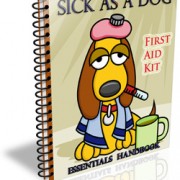CONTRACT AND HEALTH GUARANTEE
This Contract/ Health guarantee must be signed upon possession of dog/puppy. Dog/puppy will come with full registration whether it is AKC, CKC, ACA, or UABR This means you have the right to show the dog, but breeding and show quality are not guaranteed.
Buyer Responsibilities:
A licensed veterinarian must examine dog within 2.5 weeks of purchase date to REDO well puppy check for your own purposes.
Before this time CALL DR. MARIKA with ALL QUESTIONS related to health. Diarrhea? Cough?
If there is anything wrong with the puppy it must be noted in an email, text and phone at this time.
PUPPY saw vet _______________________, 2021. You are seeing a vet as well to hear for yourself that the puppy is fine. LAST VACCINE GIVEN at 16 weeks. No more VACCINES without TiTER FIRST, then proceed as necessary RABIES ONLY NEEDED but not before 6 months of age. It is recommended you do a TITER TEST (blood test for antibodies) before EVER giving another vaccine.
IT IS RECOMMENDED THAT YOU TITER YOUR DOG BEFORE REVACCINATING ALWAYS.
WE RECOMMEND INSURANCE. Healthy Paws is my favorite.
BEST VET’S IN LOS ANGELES; DR. JACKSON, WARNER PET CENTER 818-710-8528 OR DR. JEFF WERBER VALUE PET IN WESTWOOD 310-446-3908
I recommend that you see a BREED EXPERT so that you can be assured that a specialist is giving you expert breed specific opinion of your dog. In the future you may consider a recommended PALETTE RECONSTRUCTION for your French Bulldog as preventative measure to eliminate STRESS from the way this breed breaths to encourage longevity of life. Dr. Jackson does this procedure as a greatly reduced price for my puppies. Inquire with me when you are ready. DO NOT SPAY or NEUTER before age 6 years!! You dog will live longer for it. VASECTOMY ONLY if a boy. Girls Nothing before age 6. See study https://www.avma.org/javma-news/2010-03-01/rottweiler-study-links-ovaries-exceptional-longevity
TELEPHONE: 310-666-7840 and EMAIL: FrenchBulldogsLa@gmail.com
Failure to comply with above noted forms of communication will result in cancellation of this guarantee. Buyer must provide dog/puppy with routine preventative care, such as, but not limited to: 1. Following veterinarian guidelines for vaccinations and worming. 2. Following veterinarian guidelines for proper nutrition.
All deposits are nonrefundable.
Any and all shipping costs, including travel health certificate, will be the responsibility of the buyer.
Health Guarantee:
This dog/puppy is guaranteed for 1 Year after date of possession against fatal and life threatening congenital disease which adversely affects the health of the animal. Congenital disease must be of a severe or life threatening nature. If the dog dies within the 1 year guarantee period the buyer will pay to have it autopsied to determine reason of death. If reason for death is congenital then the Seller will replace the puppy.
This guarantee does not cover what is considered normal for the bulldog breeds, such as: cherry eye, loose hips, skin allergies, skin yeasts, skin fungus, elongated soft palate and symptoms there of such as:
chronic belching/vomiting after eating, luxating patella, hip dysplasia,brachysephalic syndrome (http://www.acvs.org/animalowners/healthconditions/smallanimaltopics/brachycephalicsyndrome/) small trachea, under bite, stenotic nares, inverted tail or inverted vulva and occasional heart murmurs of a 1 or 2 level, or IVDD (intervertebral disc disease) READ THIS LINK: https://frenchbulldogsla.com/ivdd-and-french-bulldogs/ , pigeon chest , that are not of a life threatening nature. (dogs carrying some congenital defects will not be recommended for breeding and no breeding rights will be allowed with these specific sales.) All our dogs are vet checked before sales and any foreseeable issues must be disclosed to buyer. Nondisclosure is not at option but it is understood that some of these “normal bulldog issues” can occur later in life and are not the fault of the breeder.
All items covered in this guarantee are by replacement only. We do not give refunds.
Seller will not be responsible for any medical expenses incurred. Buyer is aware that owning a puppy means trips to the veterinarian and understands that he/she will be responsible for all payments.
• As of the date of delivery, the dog/puppy has received proper vaccinations and worming. The Buyer has been informed of these and future vaccinations and worming due.
• This guarantee does not cover or include treatment for Coccidian, Giardia or Kennel Cough, which is common in puppies that are relocated and is usually caused by bacteria or protozoa. Kennel Cough is self-limiting and must run its course. Full recovery is expected and Kennel Cough on its own is not life threatening. Yeast infections and minor ear issues related to such are also not covered. Dr. Zoll will give unlimited guidance of preventative measures that will prevent future issues with this breed that include yeast infections that affect ears and folds in the face and genitalia.
A puppy showing any serious genetic or congenital defect will be replaced as follows:
• Animal must show defect within 6 months of possession. Seller must be notified of the problem in 2 business days of the licensed veterinarians determination and have 2 reports from 2 unassociated veterinarians stating the same problem and Seller will provide a replacement puppy of equal value.
• No refund, in part or in fill, will be given.
• Original puppy must be returned to Seller in good condition, other than the specified problem, at the Buyers expense. The Buyer will then qualify for a replacement puppy.
• This guarantee applies to the original puppy only and is nontransferable to a second party.
• Buyer is responsible for transportation costs to and from the seller on a replacement puppy.
• No replacement puppy given if the puppy has been euthanized without permission of the Seller.
• Replacement puppy will be mutually agreed upon by both parties and will be of comparable quality. It is understood that the replacement puppy may not be from the same parents of the original puppy.
• There are certain disorders that may be caused by environmental factors, for example: allergies, thyroid dysfunction, demodectic mange, and other autoimmune disorders that are not covered by this guarantee.
• We DO NOT guarantee against conditions that may or may not be stress related from the move to a new home and/or shipping process. These stress related conditions that have previously remained dormant can be triggered by the above circumstances and unfortunately cannot be diagnosed until an active case becomes evident. Some of these stress related conditions or illnesses are:
Coccidian, Giardia, and Kennel Cough.
• Any physical problem, which is or could be the result of injury, is not covered under this guarantee.
• There is no guarantee or warranty that the Buyer will be able to breed or show the puppy regardless of show or breeding potential.
• This contract supersedes any and all previous agreements.
• This contract is null and void if the terms and conditions are not fulfilled.
• Buyer agrees that he/she understands this contract fully and that this contract is under the jurisdiction of the state of California, Los Angeles County and Ventura County. It is agreed that any legal issues or court proceedings concerning the puppy purchased under this contract will be resolved in Ventura County or Los Angeles County, California. This extends to Internet sales across state lines as well.
• If at any time during the life of the dog/puppy concerned in this contract, the purchaser due to unforeseen circumstances can not continue to keep the dog we are always willing to accept the dog back and find a suitable home for him or her. No exchange of money or replacement is offered in this circumstance.
• Puppy will be ready for delivery between 14-16 weeks of age. Most will be ready at 8 weeks old, but some may need a little more time.
“Due to the varying kinds of food and different environmental conditions the puppies come in contact with; and the fact that all puppies have immune systems that take time to mature, we highly recommend NuVet Plus® immune system builder to help them maintain optimal health.
We are so confident NuVet Plus will benefit your new puppy; we will extend this guarantee by
6 months. To qualify for this guarantee extension you must give your new puppy NuVet Plus, using the manufacturer’s recommended daily dosage, for the entire guarantee period. Failure to do so makes this guarantee extension null and void.” We also highly recommend you continue to give your pet NuVet Plus beyond the guarantee period to promote optimal health for a lifetime.
About NuVet Plus
NuVet Plus is America’s premier pet immune system support supplement incorporating a precise formula of vitamins, minerals, enzymes, herbs an antioxidants that perform synergistically to bring together all of the vital ingredients required to maintain optimal health. NuVet Plus is made in the USA using natural, human grade ingredients that are formulated in an FDA registered pharmaceutical laboratory.
Veterinarian recommended, NuVet Plus was designed for dogs at every life stage; from supporting a puppy’s maturing immune system to helping to protect against issues later in life including, allergies, itching/scratching, hot spots, arthritis, digestive issues, tear staining, hair loss and more!
For your convenience you may order by phone by calling 800-474-7044, using order code 29736 or online at www.nuvet.com/29736 NuVet products are not sold in stores. Customers outside the U.S. must place order by phone only.
This is a formal contractual agreement between seller(s) and buyer.
________________
Dr. Marika Zoll
————————————–
You the Buyer
Address:
__________________
__________________
__________________
Phone:
__________________
Chip ID __________________________________









